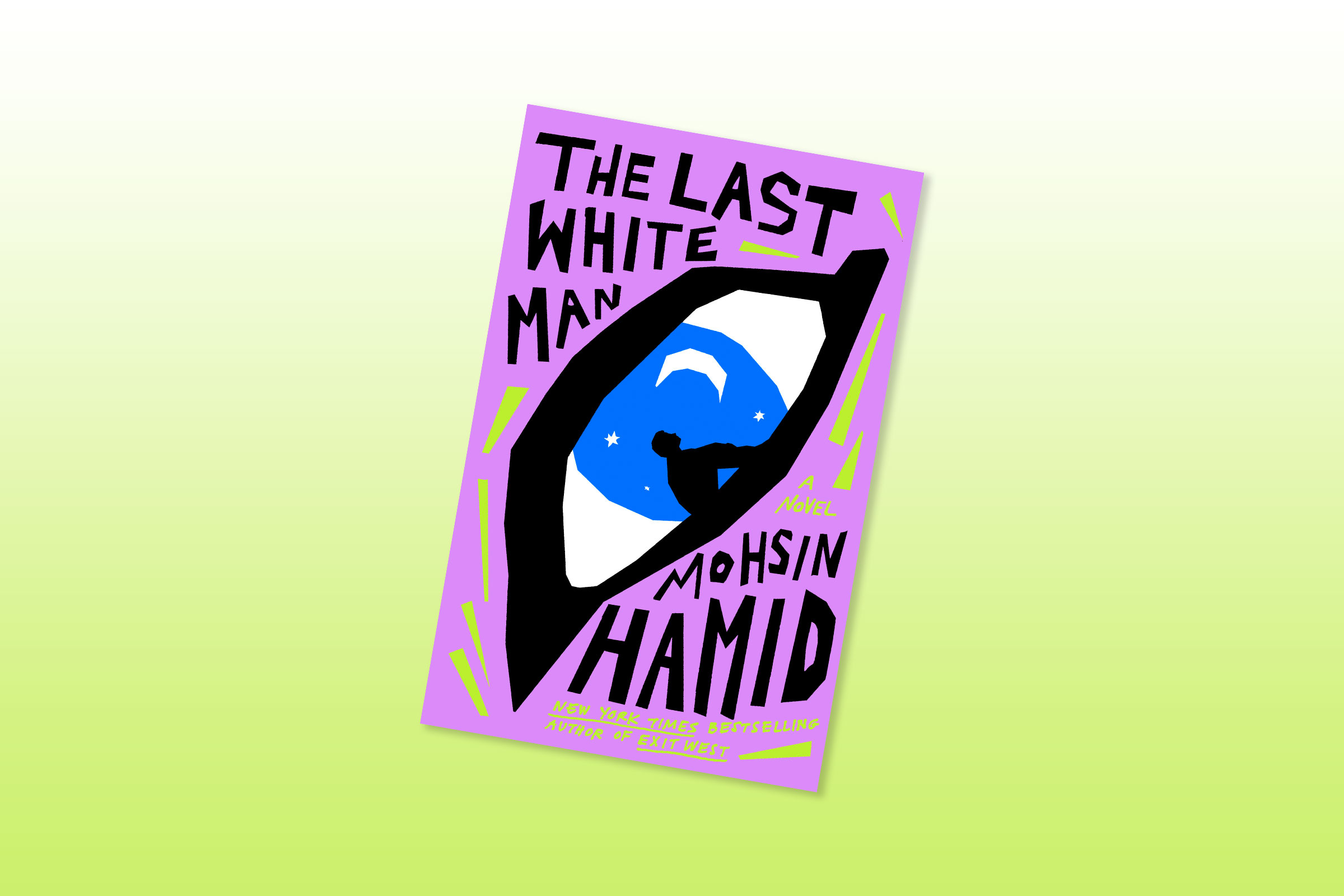
The opening of Mohsin Hamid’s The Last White Man, arriving Aug. 2, invokes Franz Kafka’s Gregor Samsa—but with a metamorphosis fitting for the racially charged era in which we live. “One morning,” Hamid writes, “Anders, a white man, woke up to find he had turned a deep and undeniable brown.”
At first Anders’ surreal transformation upends his world; he holes up at home, calls in sick to work, and swathes himself in a hoodie and sunglasses to hide his skin when he ventures into the world. He keeps the change a secret from everyone except his longtime friend turned new lover, Oona, who’s not as shocked by the shift as she is fascinated by it—for her, Anders’ situation is a worthy diversion from grieving her late twin brother, lost to substance abuse, and the exhaustive caretaking of her internet-obsessed mother.
For Anders, though his newly brown skin is a constant physical reminder that he’s no longer who he used to be, the greatest change may be in his psyche. He’s now acutely aware of otherness and being observed, how he moves in the world and how he takes up space. When he returns to work, where his boss tells him brusquely that he would “kill himself” if he experienced this transformation, he’s both drawn to and repulsed by the only other dark-skinned employee, who, unlike him, has always known what it’s like to be treated as both invisible and hypervisible. When Anders drives, he follows traffic rules fastidiously, so as not to be pulled over. Appearing with Oona in public draws undue scrutiny. And after he reveals his new self to his stoic, ailing father, who gives him a rifle, he’s apprehensive about using it, heavy with the recognition that “to be seen as a threat, as dark as he was, was to risk one day being obliterated.”
Soon, Anders isn’t the only one pondering these issues. Gradually, his unnamed but primarily white town, and even the country at large, are rife with newly dark-skinned people, all reckoning with their prejudices and preconceptions, both private and public, of brownness and otherness. Hamid, who has twice been short-listed for the Booker Prize (in 2007 for The Reluctant Fundamentalist and in 2017 for Exit West), is less concerned with how or why this change is happening than he is with probing a deep-seated and deeply problematic obsession with whiteness.
Although the author, who was born in Pakistan, initially came up with the concept for Anders’ transformation after experiencing racial profiling following the Sept. 11 attacks, there’s no mistaking the profound influence of the past few years on the work. Oona’s mother frequents QAnon-esque internet forums that drum up her fervor to protect “our people,” making her horror that much greater when Oona and then she herself transform. Militant white mobs rioting in the streets to protest the change bring to mind the white supremacist “Unite the Right” rally and the Jan. 6 attack on the Capitol.
The conceit of race transformation is hardly new; it’s long been used by Black novelists to challenge and critique the outsize role of racial identity in the world. From George Schuyler’s seminal satire Black No More, in which the protagonist changes his skin color from Black to white with a medical procedure, to Percival Everett’s darkly hilarious Erasure, in which a Black writer participates in a different kind of transformation by sardonically playing to racial stereotypes to great success, fantastical treatments of race have long served to underscore just how absurd it is that this social construct should wield so much power. Hamid’s novel follows in this legacy, challenging readers to consider the ways in which something as superficial as the color of one’s skin holds sway in their lives.
More Must-Reads from TIME
- Cybersecurity Experts Are Sounding the Alarm on DOGE
- Meet the 2025 Women of the Year
- The Harsh Truth About Disability Inclusion
- Why Do More Young Adults Have Cancer?
- Colman Domingo Leads With Radical Love
- How to Get Better at Doing Things Alone
- Michelle Zauner Stares Down the Darkness
Write to Cady Lang at cady.lang@timemagazine.com